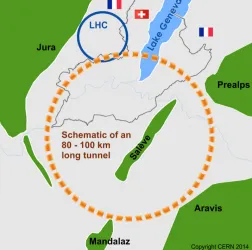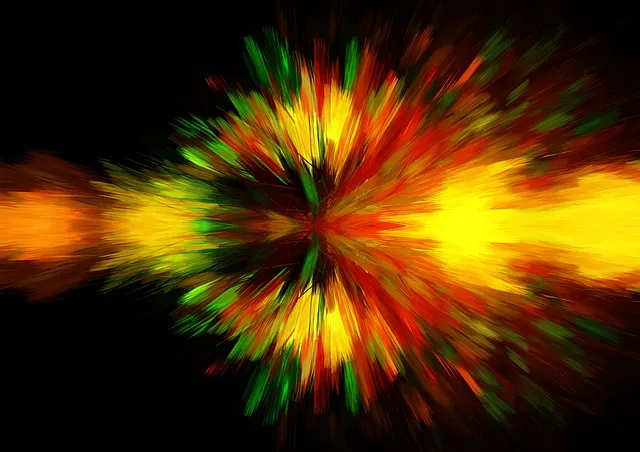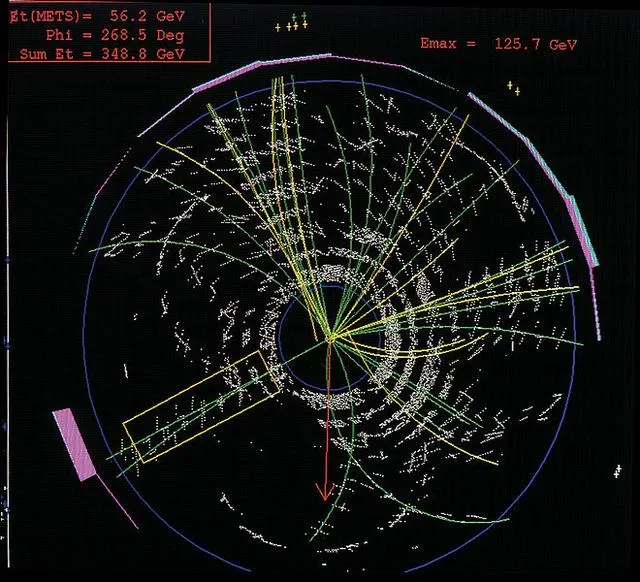Among all current activities in particle physics today, a significant fraction of them focuses on investigating what could be the next collider experiment, i.e. the accelerator machine to be switched on in 15-20 years from now (if ever built).
I am personally quite involved in this task, and I have already written about it in the past (both through regular scientific publications and on Steem). I am indeed trying to show that there exists a way to probe one of the properties of the Higgs boson that no one really thinks we will ever manage to get. I like challenges (and abusing coffee)… For more information, I recommend reading this old post about my own research.

[image credits: CERN]
Although I was not expecting to write on future colliders at the moment, I was a bit surprized to read, earlier in April, a memo whose one of the authors was Stephen Hawking.
Not only was Stephen Hawking already deceased at that time (see by the way this beautiful obituary by Penrose), but this was also the first time that I read that he was giving some interest in the experimental collider future of particle physics.
In fact, this posthume article was distributed in China before the death of Hawking, but only appear on the arxiv a few weeks after his death. The title was very direct, Should China build the Great Collider?. He tends to say yes. I tend to say that one should build it, but not necessarily in China.
A 50-YEARS TIMELINE
But before moving forward, it is interesting to explain why we should bother today about what should be built in 15-20 year from now. The reason is simple: the future is today. In order to be ready in 2035-2040 and switch on a super collider at that moment, one needs many studies, on top of the construction of the machine.
To understand this better, we can take the Large Hadron Collider at CERN, more commonly known as the LHC, as a historical example. If we look into the past, the first LHC research is dated from roughly 1985, whilst the machine started to operate more or less 20 years later. It will furthermore run until 2035.

[image credits: CERN]
This is a spread of 50 years. 20 years were needed to understand the physics that could be done at the LHC, to freeze the technology to be used and to build the machine. 30 years will then be used to exploit its potential in the best possible way.
So, if we want a kind of continuity after the LHC, i.e. some collider experiments to be started in 2035-2040, we are actually already slightly late for thinking about the future!
This is why physicists are now actively investigating the options.. Not only at CERN where a post-LHC apparatus could be built (see the map on the right for instance), but also in China.
A FUTURE CIRCULAR COLLIDER? WHY?
The first question to ask concern the physics opportunities of a potential new machine. Equivalently, why do we need another collider after the LHC? This obviously depends on the findings (or non-findings) of the LHC.

[image credits: marsspF2 (CC-SA 3.0)]
Case 1: The LHC will find, in the next few years, something like a new particle or dark matter.
After this discovery, the main issue will be to characterize the new beast and measure its properties.
However, in most well motivated theories extending the Standard Model of particle physics, there is never one single new particle, but instead a plethora of them.
It is therefore very likely that the LHC will only allow to get crude hints on physics beyond the Standard Model. Another more powerful collider will be necessary both for cornering better the particles found at the LHC and discovering the expected more massive guys.
Case 2: Nature is trickier and the LHC will only get glimpses about new phenomena through deviations from the Standard Model. In this case, our theoretical understanding allows us to get an idea about where new particles are hiding (in terms of the right energy scale to probe).
Once again, a new more powerful machine exploring the right scale is the way to go to open the door to new phenomena!

[image credits: Pixabay (CC0)]
Case 3: Nature could in principle screws us even harder, and all observations after 30 years of LHC operation will be the Standard Model of particle physics and nothing else!
In this case, one will have to verify that every single parameter of the Standard Model matches the expectation.
And we know that the LHC is not sufficient for this task, as discussed in this post where I present my own research about the self-interactions of the Higgs boson
We thus needs again to think bigger with a greater machine!
HAWKING’S STAKE… AND MINE
There are many options for this new machine. One of them focuses on a 100km long collider with a collision energy reaching 7 times the LHC one. A huge LHC somehow, that consists in a perfect plan for any of the three cases above.

[image credits: Fermilab (public domain)]
The vision of Hawking (and his co-author Kane) is to build this machine in China.
In this memo, they address the question both from the scientific, cultural and economical standpoints.
I however think that most of what the authors say also applies to a second option for this machine, located at CERN.
I have already given my opinion about the scientific opportunities. This is mostly shared by the two authors, although I disagree with them about putting once again supersymmetry in the spotlight.
On the other hand, building such a machine involves the accelerator and imaging industries, magnet technologies,… This project will hence definitely generate revenues exceeding by far the investments. But this has always be the case: new technologies and techniques emerge from particle physics because it lies at the frontier of knowledge.
And we have yet not talked about all people getting a PhD on this topic and enriching the industrial workforce at the end of their thesis. Not everyone indeed stays in physics!
CERN OR CHINA?
Whilst a super collider may allow China to take a leading role in particle physics, being at the roots of the development of a new world center for high-energy physics, the entire accelerator complex will have to be designed from scratch.
At CERN, the LHC will be taken as a pre-accelerator and that many things are thus already in place. On the other hand, the LHC will be exploited as much as possible before being shut down, which may delay the full thing.
Therefore, both options need to be considered for now. Who knows what our future will be?
Once again, some stupid stuff is hidden in this post… Can you find it?
STEEMSTEM
SteemSTEM is a community-driven project that now runs on Steem for more than 1.5 year. We seek to build a community of science lovers and to make the Steem blockchain a better place for Science Technology Engineering and Mathematics (STEM).
More information can be found on the @steemstem blog, on our discord server and in our last project report. Please also have a look on this post for what concerns the building of our community.